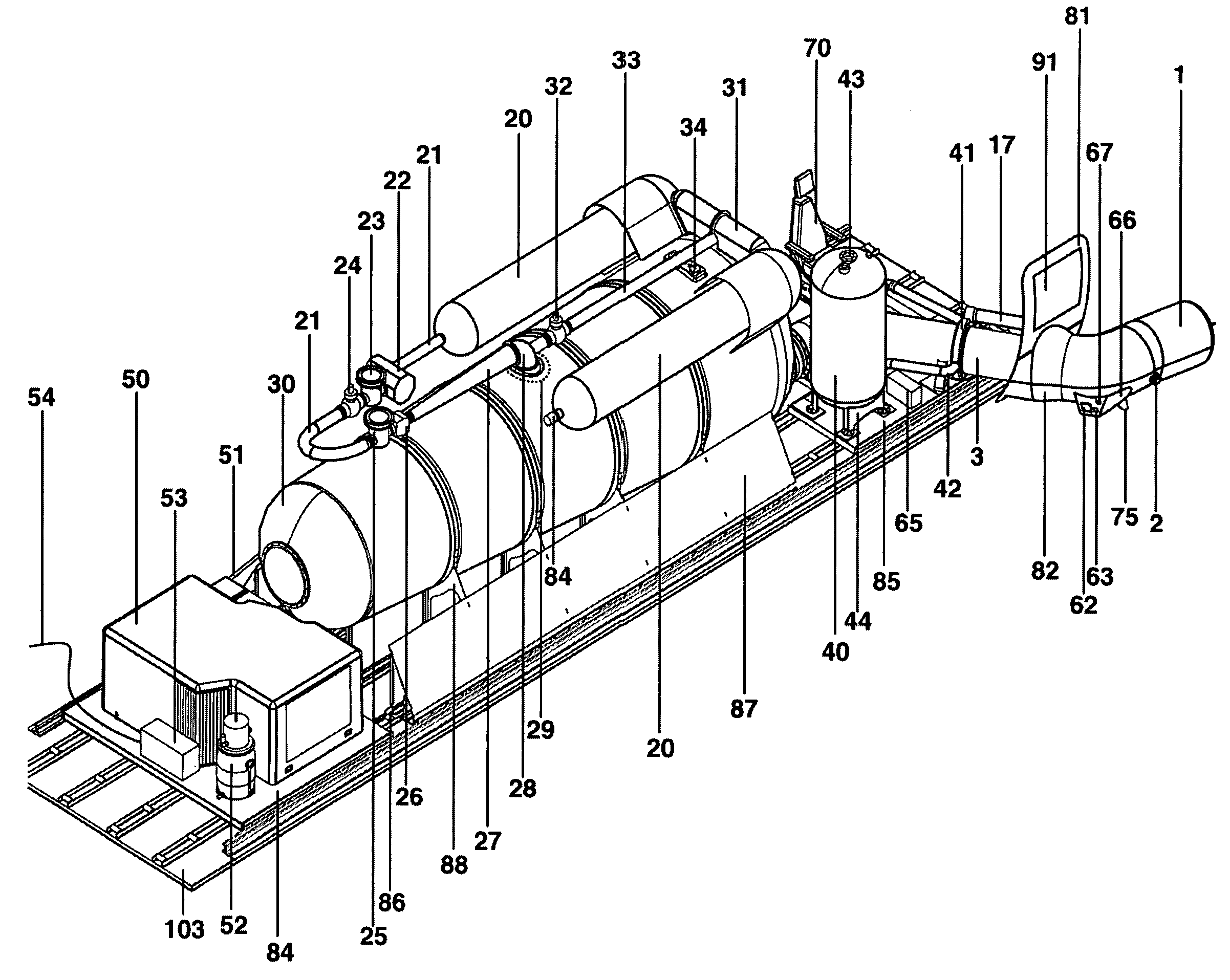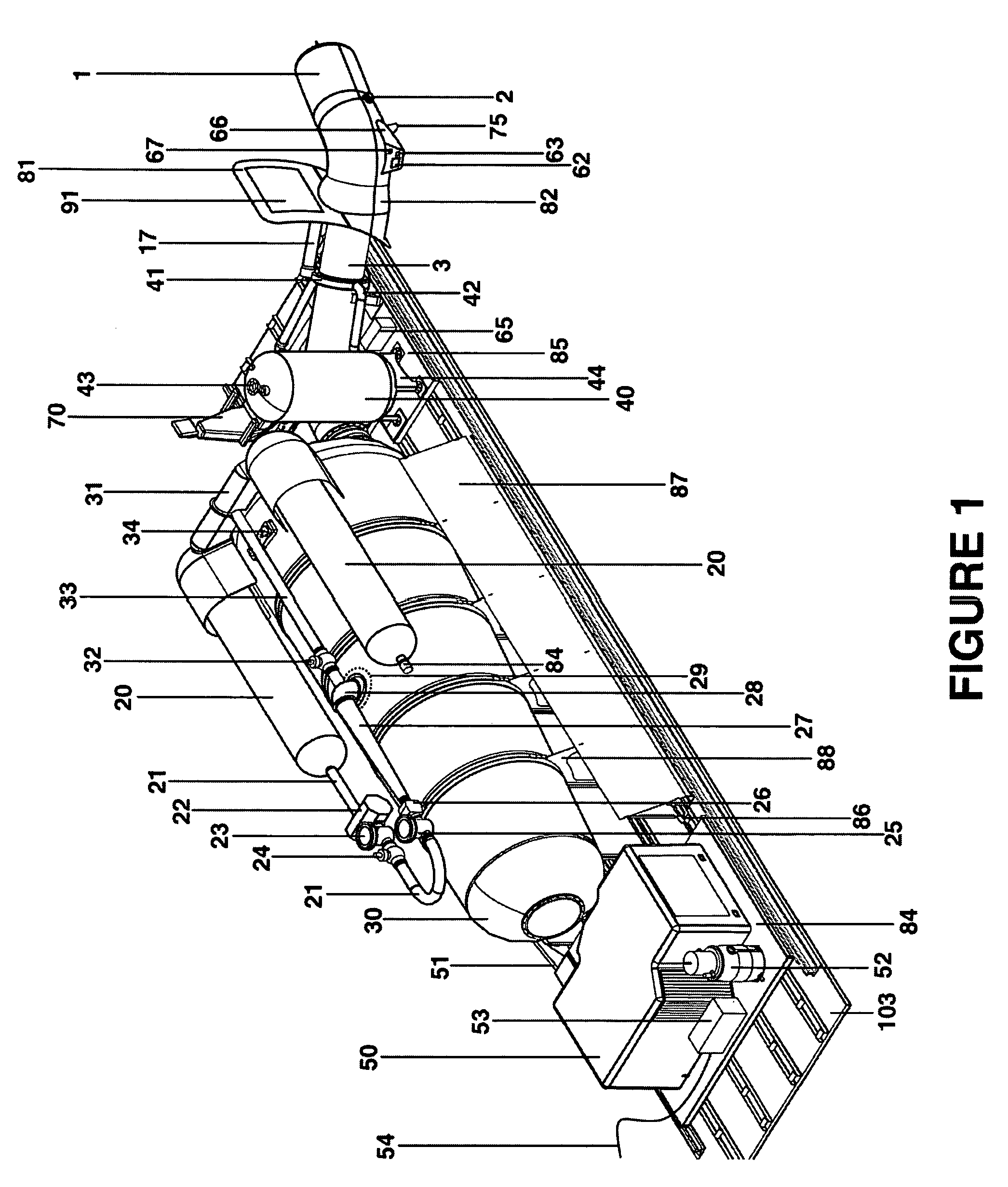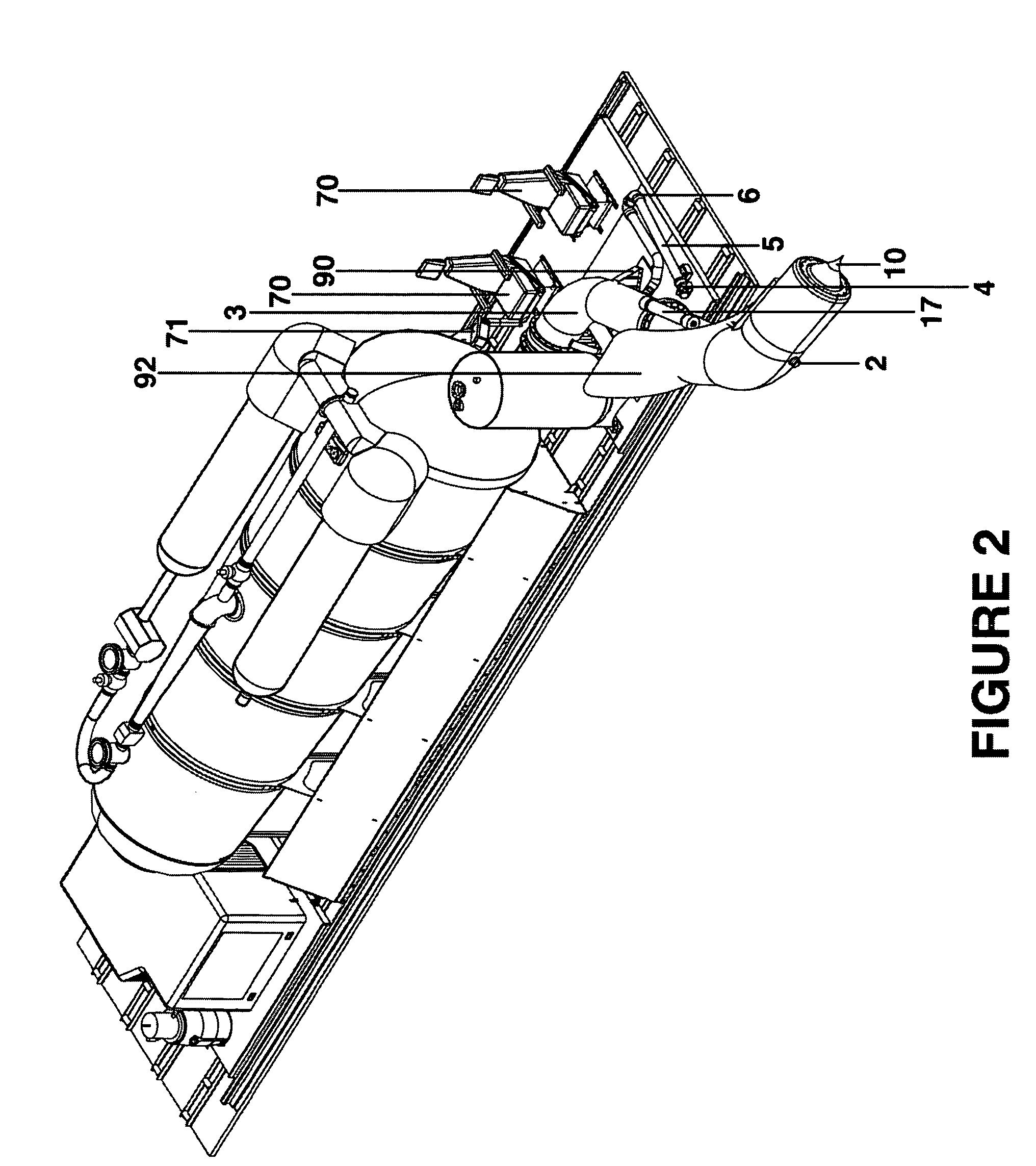All the aforementioned constant flow methodologies have certain limitations and deficiencies.
Furthermore, many of the systems referenced cannot typically undertake multiple drops from the same tank and fluid volume without returning to the tanker base for refilling.
Other systems have been conceived which require only minimal modification to the host aircraft, but such systems are generally incapable of achieving an optimal dispersal pattern conducive to IAB certification for suppressing large fires.
The MAFF system uses a pair of retardant ejection tubes which extend rearward and downward, over the trailing edge of the opened cargo ramp of the aircraft, and due to fluid ejection limitations and a dual discharge manifold configuration cannot achieve the desired optimal ground dispersal pattern typical of such systems.
Furthermore, due to the installation methodology and configuration of the MAFF system which utilizes the rear ramp of the Lockheed Martin C-130 aircraft, substantial airframe corrosion results when the retardant is discharged and vortices carry peripheral retardant spray upward into the underside of the aircraft tail empennage.
Further corrosion can also result when the MAFF system is being refilled as external retardant filling interfaces are inadequate, and overfill retardant can spill onto the cargo floor.
Despite the portability of MAFFS and other roll-on roll-off (Ro—Ro) aerial fire fighting concepts, such systems generally require opening a door or ramp at the rear of the aircraft in flight and thereby compromise aircraft pressurization.
Such systems also limit aircraft operating altitudes and speed and affect handling characteristics, and can also create safety of flight concerns particularly in mountainous terrain.
In some configurations the retardant discharge assembly must be deployed prior to flight in the operable position which dramatically increases drag, and again impairs aircraft handling characteristics, restricting flight altitudes to below ten thousand feet, resulting in slower transit speeds to the fire.
Most aerial firefighting systems do not have on-board dynamic mixing capabilities of the foam fire retardant chemicals and water, which must be premixed on the ground and thereby preclude dynamic configuration in flight of the retardant mixture.
The system, however, forms part of a dedicated firefighting assembly permanently installed on the host aircraft, and does not permit the system operator to dynamically select the ratio of retardant to water mix.
However, all of these systems involve modified airframes, or are helicopter based and hence are incapable of working in conjunction with a non-dedicated, Ro—Ro, high volume delivery system.
This diversity of airframe types results in a lack of fleet uniformity driving up maintenance costs, with no flexibility to undertake alternate missions.
However, both the Eason and Tomlinson patents describe systems which are primarily suited for lateral firefighting typical of high rise apartment buildings with limited water reservoirs, which require directed horizontal water streams, and are not capable of meeting IAB drop pattern dispersal criteria.
Further, such systems cannot deliver a large volume of water as is typically required in major forest fires.
Although the system disclosed by Bisson has multi-axis water stream vectoring capabilities, with variable flow rate, the helicopter is tethered to a fire hose and cannot be made portable, or independent from the water source thereby restricting the mobility of the helicopter.
Although several rotary and fixed wing, vertical discharge aerial firefighting systems disclose variable flow rate, or constant flow rate discharge means, none of them are adapted for use with Ro—Ro aircraft such as the Lockheed-Martin C-130 without modifying the airframe.
However, Denoize et.al. fail to disclose beneficial features, such as temporary, portable, modular, non-dedicated, Ro—Ro, pressurized fuselage mounting methodology for a fully integrated fire retardant delivery system including control interfaces, with global positioning system capability for precision delivery and ground asset location, with fire detection, targeting, and vegetative fuel characterization sensors, telemetry antennas, and / or computer processing systems, which are not affected by mechanical failure, or inoperability of the host aircraft.
Further, in conjunction with the aerial delivery of heavy payloads of retardant, current airborne firefighting operations have on occasion proven to be dangerous for ground crews engaged in fighting fires, or civilian populations within the vicinity of aircraft water bombing operations.
Accordingly, there is a continuing, unaddressed need for an improved firefighting apparatus capable of temporary use on various host aircraft and capable of effective water and / or retardant delivery from the air.
Additionally, there is a continuing, unaddressed need for a firefighting apparatus and system capable of common aircraft roll-on, roll-off, non-dedicated operation, without requiring airframe modifications.
Additionally, there is a continuing, unaddressed need for a firefighting apparatus and system capable of providing for pressurized fuselage based, Ro—Ro aerial fire fighting.
Additionally, there is a continuing, unaddressed need for a non-dedicated, Ro—Ro firefighting apparatus and system providing for constant flow discharge or operator-definable discharge from a pressurized fuselage.
Additionally, there is a continuing, unaddressed need for a firefighting apparatus and system, incorporating fire detection sensing and targeting capabilities, and / or a data / imagery telemetry system integrated into a single portable, pressurized, pallet assembly which can move seamlessly between aircraft without requiring airframe modifications.
 Login to View More
Login to View More  Login to View More
Login to View More 


